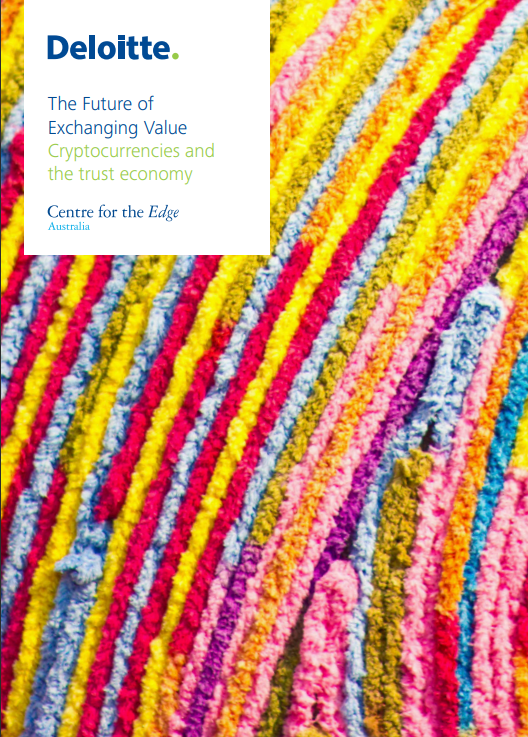
1 Exchanging value
In 2012, we published a report entitled The future of
exchanging value – uncovering new ways of spending1
which broadly examined how money is used rather
than focusing on individual elements such as payments,
currency, and so on. Our view was that only by looking
at the whole system could we understand how the
financial system might evolve.
Our findings in that report centred on the realisation
that we were reaching the end of the initial build-out
of a digital payments infrastructure. The task of
provisioning the infrastructure merchants require to
accept real-time digital payments, or for two individuals
to settle a debt, was largely complete. Consequently,
our focus had shifted to streamlining the buying journey
– from the pieces and parts to the whole.
The rush to implement near-field communication (NFC)
technology such as payWave and PayPass and the then
recent emergence of Bitcoin and other complementary
digital currencies were part of this shift. The business
case for NFC has been built around streamlining the
checkout experience and reducing fraud rather than
providing a distinctly new capability. Bitcoin was
proposed as a cheaper, more efficient mechanism
for peer-to-peer payments and currency transfers.
In the first report, we reasoned that the future of
exchanging value would stem from how consumer
behaviour changed. Like many areas of society,
consumers rather than businesses or governments are
setting the technological ground rules. We suggested
that organisations needed to look beyond traditional
payment platforms, narrowly defined in terms of
features and functions, and consider their customers
a broader ‘job to be done’.
What was needed was a customer-centric approach
– one focused on simplifying the buying journey by
ensuring the right payment solution was available in the
right place at the right time. Payment solutions needed
to be perceived as instantaneous by their users, allowing
users to exchange value and move on with their day,
whether they were interacting with an established
merchant or simply standing on the kerb splitting a
bill with friends after an evening meal. The solutions
needed to be ubiquitous, allowing customer and
merchant to transact at the far end of the store or deep
in the aisles just as easily as if they were both standing
next to the till. And finally, these solutions needed to be
open, both in their implementation and governance, so
consumers could understand and develop trust in these
new ways of exchanging value. The next generation of
finance solutions should be seen as tools to improve
engagement with customers rather than as service
delivery platforms.
As it turns out, the first report was published at
the leading edge of an explosion in the use of new
payments technologies and complementary currencies.
Many of the predictions we made in the first report
came true.
We saw NFC as an interesting technology but the
business case was not as strong as the technology’s
proponents claimed. Most of the wasted time and
effort in the buying journey was in taking the goods
to the till and tallying them, not in the final transaction,
which would lead many merchants to view NFC as an
excuse for the card providers to increase fees at the
expense of the merchant’s margins. Since then, some
retailers in the US have banded together to create
an alternative payments platform, called CurrenC™,
intended as a lower-cost alternative to the solutions
from the entrenched payments providers. There is
also anecdotal evidence of many merchants adding
a surcharge for using a card, or providing incentives
such as prize draws for customers who pay cash.
Apple also introduced Apple Pay, which showed the
industry how to build a payments solution using existing
standards and deliver a much higher-quality and more
compelling user experience.
The Future Of Exchanging Value Cryptocurrencies And The Trust Economy by Nicholas Gruen




